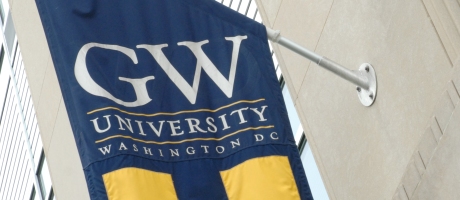Faculty, staff, students and other members of the GW community will now be able to submit ideas online for how the university can improve diversity and inclusion on campus.
President Steven Knapp first launched the diversity and inclusion initiative earlier this year. The key components of the initiative include the creation of the position of associate provost for diversity and inclusion and the establishment of a President’s Council on Diversity and Inclusion.
A search is currently underway for an associate provost for diversity and inclusion, who will provide leadership on all aspects of educational and employment equity, access, cultural understanding and competency and human rights.
The council is composed of members representing the breadth of the university community. Its role is to generate ideas and formulate recommendations for increasing the university’s effectiveness in reaching out to persons of all backgrounds, and to provide advice and feedback to the associate provost for diversity and inclusion.
Fourteen council members were selected in the spring along with two co-chairs: Gregory Squires, professor of sociology and public policy and public administration, and Helen Cannaday Saulny, associate vice president and dean of freshman.
The new website contains the council’s contact information, mission statement and a form for people to submit ideas for enhancing diversity at GW.
Dr. Squires and Ms. Cannaday Saulny sat down with GW Today to give an update on the council’s work and discuss the new website.
Q: What is the purpose of the President’s Council on Diversity and Inclusion?
A: Our purpose is to generate recommendations for the administration here at GW. We’ll be reporting to the associate provost for diversity and inclusion; Steve Lerman, provost and executive vice president for academic affairs; and President Knapp. We are gathering ideas for what can be done to make GW a more welcoming and inclusive place for the diverse groups of people we attract as students, faculty and staff. We’re also gathering recommendations for what the GW community can do to make the Washington, D.C. area a healthier, more prosperous, diverse and inclusive community.
Q: What kind of progress has the council made on fostering diversity and inclusion at GW?
A: We’ve generated a lot of discussion at this point. We’ve created four working groups on the student experience, the staff experience, the faculty experience and the D.C. community experience, each of which have about 15-18 people. What we’ve accomplished is to generate discussions around these issues, but we don’t have any conclusions yet. We’re starting to collect some information, and we’ve identified some issues we think we’ll be looking at. What we ultimately decide to recommend on those issues remains to be determined.
Q: What are GW’s strengths in diversity and inclusion?
A: Being in Washington, D.C. provides a larger and more diverse community in which we are a part. The fact that President Knapp has formed this council demonstrates our commitment to diversity and inclusion. We’ve responded to the needs of our community with support services and shown that this a good place to work and go to school.
Q: Where can GW improve in its diversity and inclusion?
A: The diversity of the faculty is an ongoing issue. We need to get more accountability in the hiring process so that the diversity goals are met. We think there’s room to improve the climate on campus for students, faculty, staff and alumni. We also think there are ways we can be contributing more to the greater Washington, D.C. community.
Q: What’s the council’s overall goal?
A: Our immediate goal is to have a report by the end of this academic year with specific concrete recommendations for how the university can move to being responsive to the diversity goals. We recognize that diversity is a very broad phenomenon. It’s not just race. It’s not just ethnicity. It’s also religious beliefs, lifestyle and sexual orientation. It’s a huge range of issues, and we’re prepared for the fact that we may not address all of these issues in the first year. But the council will be an ongoing entity.
Q: What’s the purpose of the council’s new website?
A: The primary purpose of the website is to inform our community of the activities of the council and further cast the net for involvement and feedback. We’ll have the list of the names of the council and the other working committee members. We’ll also be announcing some public meetings on the website. And we’ll invite people to submit their ideas.
Q: What does the council plan to do with the ideas submitted on the website?
A: The hope is that with the website we can get as many ideas as possible for how to enhance diversity at GW.


